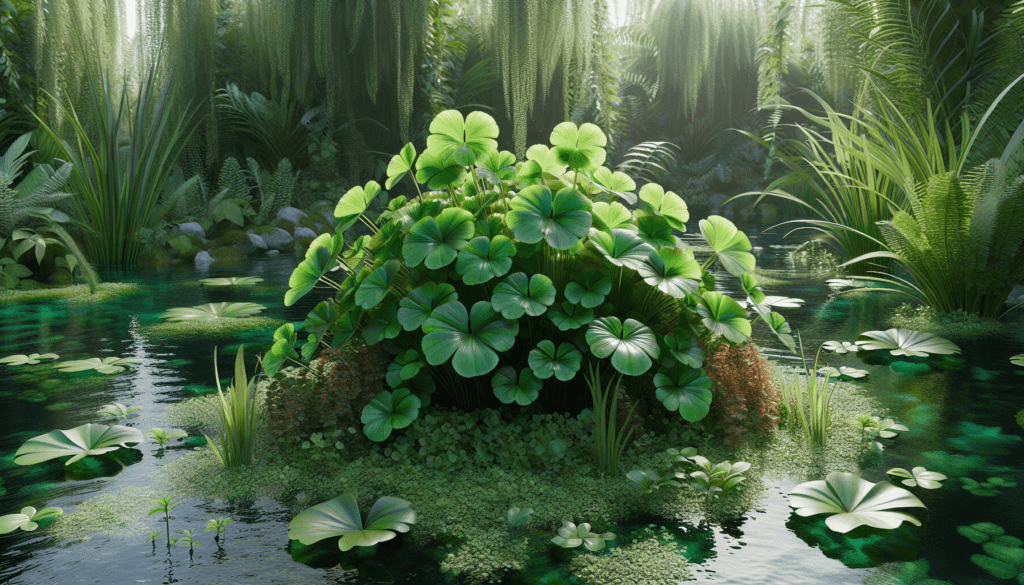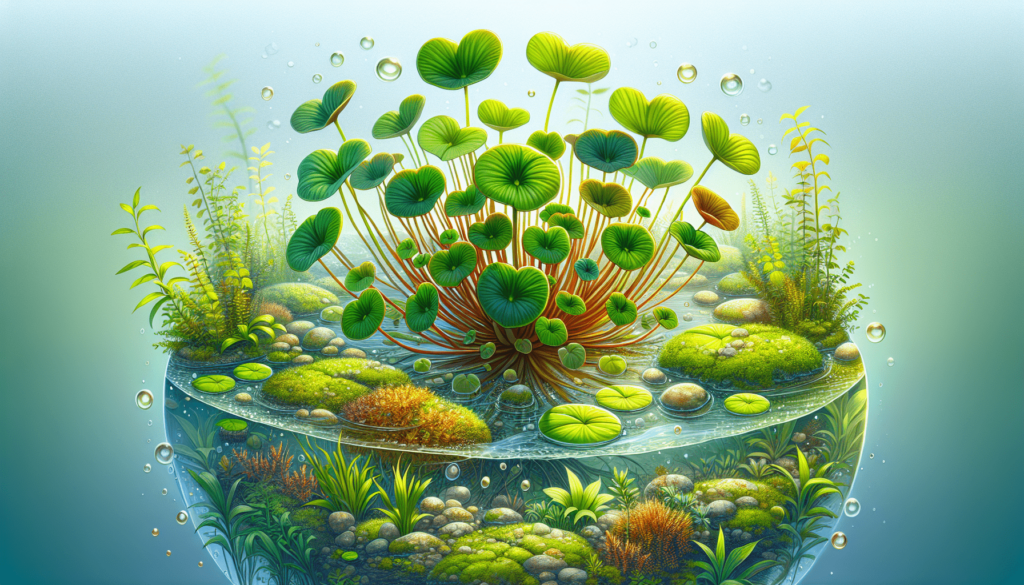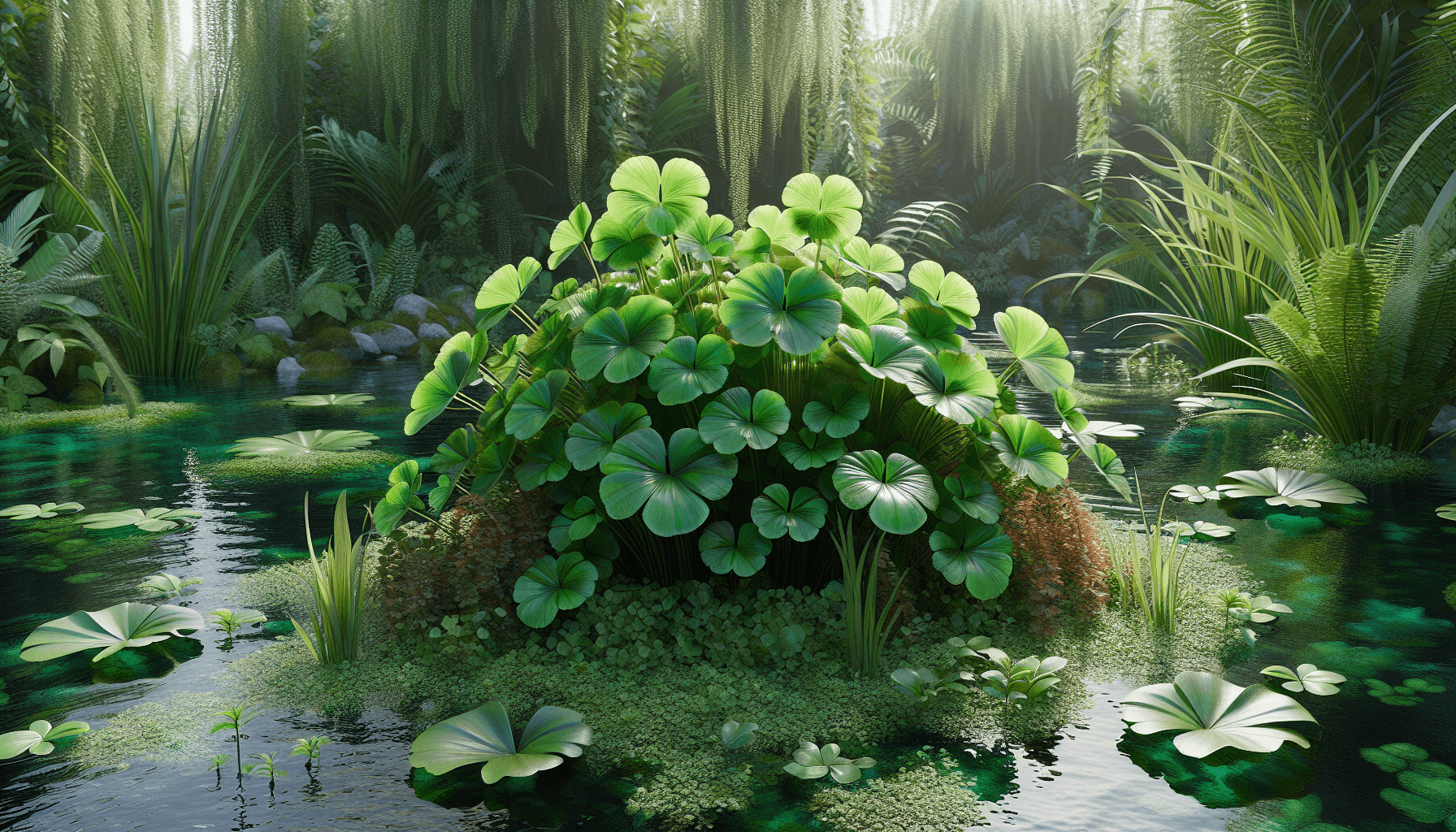In the grand realm of aquatic vegetation, the plant Caldesia assumes a key role due to its unique characteristics and functional contributions. Your journey through this article will illuminate you about this special flora from the family Alismataceae, enriching your understanding of its distinctive morphology, notable environmental role, as well as its habitat preferences. As you traverse this intriguing terrain of knowledge, you will be able to comprehend why the aquatic plant Caldesia is regarded significant in both, ecological and botanical realms.
Overview of Caldesia
Definition of Caldesia
Caldesia refers to a genus of aquatic flowering plants belonging to the family Alismataceae. These plants are typically perennial, meaning they live for more than two years. Both submerged and emergent variants of Caldesia can be found. As aquatic plants, members of the Caldesia genus play a vital role in the ecosystems they inhabit, providing both food and habitat for a variety of organisms.
Origin and Distribution of Caldesia
The genus Caldesia is native to both Old and New World Tropics, with a few species also extending into the temperate regions. You will find them widely distributed across various continents including Asia, Africa, Europe, and North and South America. However, there remains a great need for comprehensive research on the precise biogeographic distribution of these aquatic plants.
Common Names and Varieties of Caldesia
Caldesia species are often referred to by local common names based on their characteristics or appearance. For instance, Caldesia parnassifolia is often called ‘ditch stonecrop’ or ‘lake plantain’. Notable species of Caldesia include Caldesia parnassifolia, Caldesia grandis, and Caldesia oligococca. They vary in size and physical characteristics, but share their aquatic habitats and the overall form of their foliage and flowers.
Physical Characteristics of Caldesia
Size and Form
Caldesia plants are generally small to medium in size. Their perennial nature enables them to develop extensive rhizomes – modified underground stems that send out roots and shoots from their nodes. When these plants emerge above the surface of the water, they display leafy shoots and inflorescences displaying small flowers.
Types of Leaves
The leaves of Caldesia are a remarkable feature of these plants. Depending on the species and the conditions of their habitat, they may have long petioled, submerged, or floating leaves. The floating leaves are typically broad, with a heart or kidney shape while the submerged leaves are typically more delicate and grass-like.
Flower Formation
Caldesia species produce simple or branched inflorescences, typically with three-petalled flowers. The flowers can display a variety of colors – usually white, yellow, or cream – depending on the specific species.
Seed Production
The Caldesia plants, after flowering, produce many tiny seeds which are used for reproduction. The seeds are dispersed by water and begin to sprout when they find suitable conditions on the water’s floor.

Habitat for Caldesia
Ideal Conditions for Growth
Caldesia plants prefer a warm tropical environment, but some species are also adaptable to temperate climates. They need a well-aerated and nutrient-rich substrate for root development. Sunlight is crucial for the growth of these plants, although they can also tolerate some partial shade.
Common Environments Where Caldesia Are Found
Given their preference for warm and nutrient-rich environments, Caldesia species are commonly found in the shallow waters of freshwater habitats such as ponds, lakes, swamps, and slow-moving rivers. They may also be found in ditches and rice paddies, especially in regions where these wetlands are common.
Geographical Spread
The geographical spread of the Caldesia is quite broad, extending across multiple continents as they adapt well to various ecosystems. The widest distribution is seen in Asia, followed by Africa, South America, and Europe.
Adaptations to Environment
Caldesia’s having both floating and submerged leaves is a primary adaptation. This allows the plants to carry out photosynthesis efficiently, even under varying water levels. The extensive rhizomes enable them to form large colonies, a competitive advantage in nutrient-rich aquatic habitats.
Life Cycle of Caldesia
Stages of Life Cycle
The life cycle of Caldesia consists of the usual stages of a flowering plant, including germination, growth and development, and reproduction.
Germination
Following seed dispersal, Caldesia seeds start the process of germination when they find suitable conditions on the water’s floor. The exact time needed for germination may differ based on the species and conditions such as temperature, light, and nutrient availability.
Growth and Development
Growth and development of Caldesia plants span over several years due to their perennial nature. New shoots and roots arise from the rhizome, enabling the plant to take in necessary nutrients from the surrounding water and soil.
Reproduction and Seeding
Caldesia plants typically flower in the warmer months. After pollination, the plant produces many small seeds. When moisture conditions are favorable, seeds are dispersed onto the water and the cycle begins anew with germination.

Cultivation and Care for Caldesia
Cultivation Techniques
Caldesia thrive in rich, wet soils and shallow water environment. They can be propagated directly using seeds or through the division of rhizomes.
Managing Pests and Diseases
While Caldesia plants are generally resistant to most pests and diseases, high nutrient availability can increase the potential for pest infestations or pathogen attacks. Regular monitoring and appropriate management strategies should be put in place to maintain healthy plant growth.
Watering and Nutrient Requirements
As aquatic plants, Caldesia require a very high water regime. Additionally, they prefer rich, nutrient-filled soils. Adequate sunlight is also essential for their growth and development.
Harvesting and Replanting
Caldesia can be harvested by simply plucking the mature leaves or flowers. Replanting can be done either by sowing seeds or by planting divisions of the rhizome.
Uses of Caldesia
As an Ornamental Plant
Caldesia are valued for their ornamental nature, especially within water gardens or ponds. Their beautiful foliage and delicate flowers provide an elegant aesthetic touch to aquatic settings.
In Ecosystem Services
These plants act as primary producers in aquatic ecosystems, contributing to the food chain. They also provide shelter for a multitude of aquatic creatures and contribute to water purification by absorbing excess nutrients.
Potential Medicinal Uses
While comprehensive research is lacking in this regard, there are traditional claims that certain Caldesia species have medicinal properties. These potential uses warrant extensive scientific exploration.
In Culture and Folklore
Due to their aesthetic appeal, Caldesia plants have found their way into the folklore and legends of several cultures. They often symbolize beauty, elegance, and the intimate connection between land and water.
Species of Caldesia
Caldesia parnassifolia
Caldesia parnassifolia, commonly known as the lake plantain, is a species native to Asia, Oceania, and Africa. This species is characterized by its features of kidney-shaped leaves and branched inflorescences with small white flowers.
Caldesia grandis
Caldesia grandis is indigenous to South America. It is characterized by its large size and robust rhizomes. Its leaves are round or heart-shaped, and it produces small, typically white flowers.
Caldesia oligococca
Caldesia oligococca, mostly found in Asian countries, has thin, thread-like submerged leaves and broader floating leaves. This species is less common than the others and has opaque white, small flowers.
Threats to Caldesia
Common Diseases and Pests
Caldesia species are generally resistant to pests and diseases. However, when nutrient levels are too high, they might be prone to pest infestations. Appropriate management strategies need to be applied in such cases.
Environmental Threats
Pollution, especially of water sources, can be a significant threat to Caldesia. Industrial waste, excessive use of chemicals or fertilizers, and urban runoff can lead to the degradation of natural habitats.
Conservation Status
The conservation status of Caldesia species varies widely and lacks comprehensive documentation. Some species are quite common, while others may be more vulnerable due to habitat loss or environmental changes.
Caldesia in the Aquatic Ecosystem
Role in the Aquatic Food Chain
As a primary producer, Caldesia contributes significantly to aquatic food chains. These plants provide shelter and food for a range of invertebrates, which are then preyed upon by higher order consumers.
Caldesia’s Effect on Water Quality
Caldesia absorbs nutrients from water and soil, thus contributing to water purification. They also release oxygen into the water, which aids in maintaining oxygen levels.
Interactions with Other Aquatic Organisms
Caldesia provides shelter and sustenance for numerous aquatic organisms, promoting biodiversity. Their roots also provide a niche for many microbes, contributing to the overall health of the aquatic ecosystem.
Contribution to Biodiversity
By providing food and habitat, Caldesia contributes to the existence of diverse fauna in aquatic ecosystems. It plays a vital role in maintaining overall biodiversity.
Appropriating Caldesia in Aquaponics
Water Parameters for Growth
For successful growth in aquaponic systems, Caldesia requires nutrient-rich water and an ample supply of light. The ideal pH level ranges from 6.0 to 7.5 with a temperature preference between 20-30 degrees Celsius.
Nitrogen Fixation Properties
Caldesia plants are capable of converting ammonia into nitrite and nitrite into nitrate – a process beneficial to aquaponic systems as this form of nitrogen is more suitable for fish.
Integration in an Aquaponic System
Integration of Caldesia in an aquaponic system can have multiple benefits. Apart from their nitrogen fixation properties, they absorb other excess nutrients, improving the water quality for the fish and reducing the need for water changes.
Benefits to Fishes and Aquatic Life
Caldesia plants can provide a natural habitat for fish and other aquatic creatures within an aquaponic system. Their roots offer shelter and their leaves serve as a potential food source.
